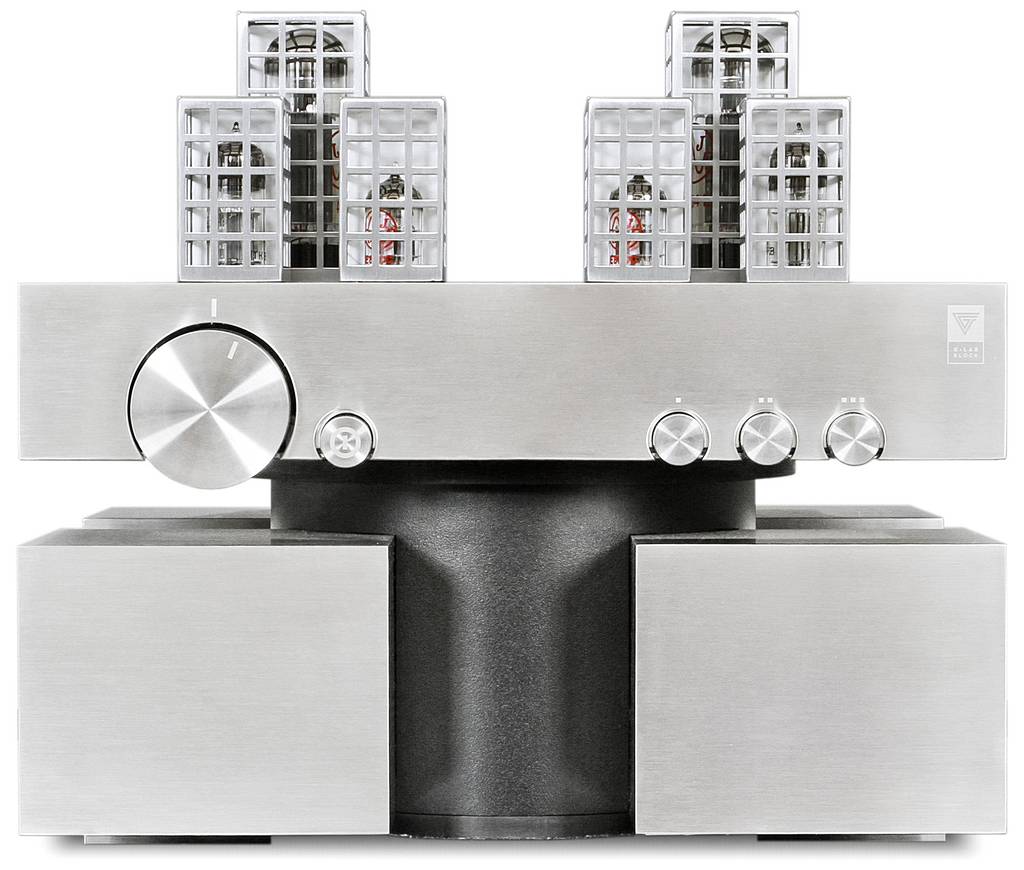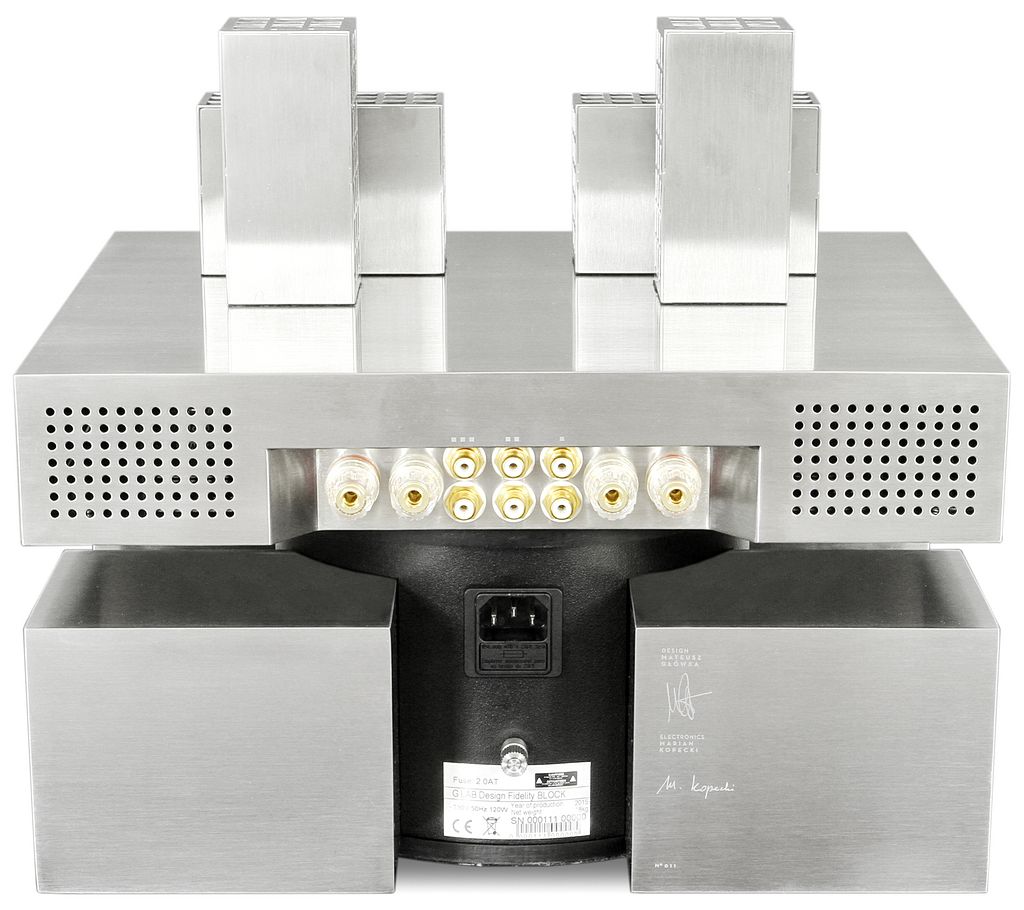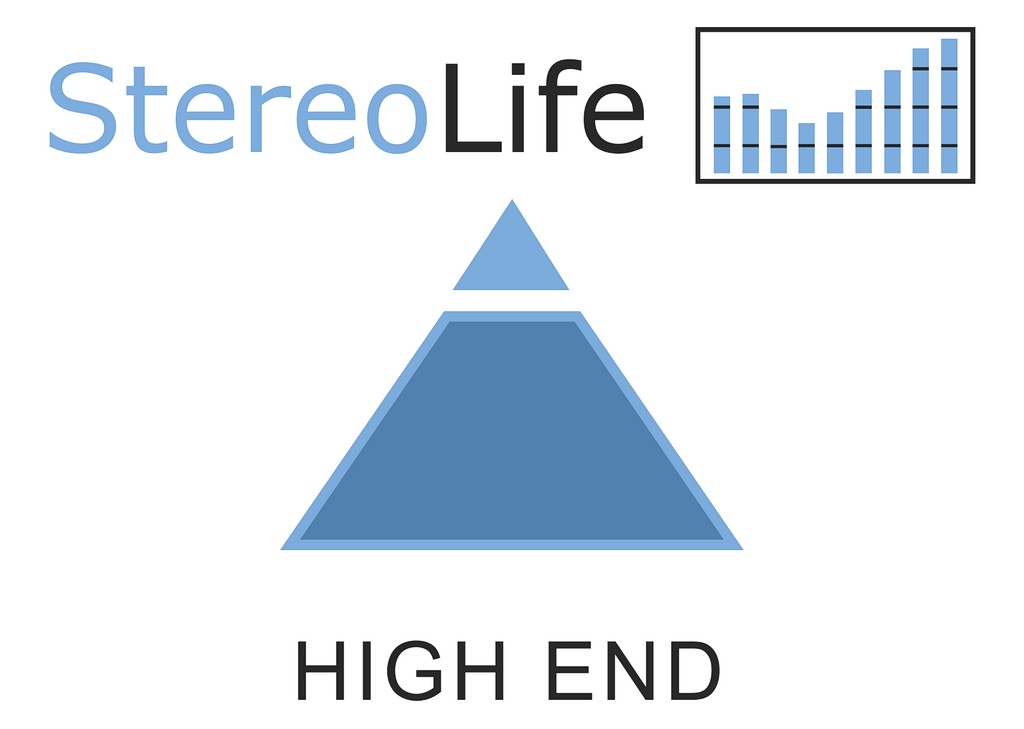
- Reviews
- Posted
G Lab Design Fidelity Block
5.5-watt tube amplifier made by a young, little-known company? It doesn't sound like a recipe for success, does it? But when we saw this amp, we knew we have to review it. Block is a product of G Lab Design Fidelity company, whose aim was to design a tube amp for the 21st century. The device looks spectacular, but is simple in its form, which - according to the manufacturer - is also reflected in its internal structure. Maybe the company is young, but obviously people with experience and clear vision stand behind it.
Visual design of Block is the work of Mr Mateusz Główka who graduated from the Academy of Fine Arts in Cracow. The electronic circuit was created by Marian Kopecki working as Head of Development at HSK Data. ELZAB, a company specializing in mechanical engineering and electronics, was responsible for the production. Does it still sound like a project doomed to failure? I don't think so. So we decided to look deeper into Block in our editorial listening room.

Design and functionality
I am not going to argue with the fact that we are dealing with an ingenious and modern device. The chassis was developed with rectangular pieces attached to one central foot in the shape of wide cylinder. Tubes, buttons and knobs are mounted to the biggest block, which is placed on the top, while underneath we still have four smaller blocks. Metal, tubes, and highly original design - we can find it attractive straightaway. The packaging itself is impressive, especially with the foam full of accessories. Here we find tubes with their covers, and a power cord. We have to remove the amp from thick sheets of foam, which, however, is not too difficult because the entire structure is almost perfectly balanced.
The amplifier touches the hi-fi rack through the soft pad under the central cylinder. After putting the unit in place, it can be fairly easily moved or rotated. Assembling the tubes takes only a minute. There are just a six of them, so it's hard to go wrong. When they are already in their positions, we can protect each tube with a metal cover. This solution is certainly more aesthetic than one, large cage covering the entire amplifier. However, buttons and knobs are the most original element here. They all protrude slightly beyond the bottom edge of the main block, and at twelve o'clock we have the minimum volume level. To increase it, we turn it to the right, but the zero point is slightly unusual. In addition to the potentiometer there are four buttons on the front panel of the amplifier - the mains switch and three source selectors.
The back panel is as minimalist as the front. We have only three RCA inputs (two line inputs and one phono for MM cartridges), single speaker terminals (no impedance selection), and three-pin power socket mounted in the central cylinder. This allows us to guess that the power transformer is hidden in it. What exactly is there in each of the blocks? We don't know because the device can't be disassembled without damage. The rear part of the main block was covered with ventilation holes, while the lower was engraved with the serial number and the names and signatures of Block's makers. Cons? No remote control and very low power - 5.5 W per channel. But we really enjoy the superb craftsmanship combined with simplicity of the design. The amplifier looks as if it was milled from a single piece of metal. Not a single screw or weld - fantastic!

Sound performance
I conducted a first listening session with speakers which in theory shouldn't fit a tube amp - Equilibrium Ether Ceramique speakers with a ceramic woofer and a metal dome. I did this experiment just to warm up the amp a little before further tests. In my mind I already started to look for Focal's, WLM's or Living Voice's speakers, but it wasn't necessary. When I turned the volume up, Block didn't give up at all. It quickly became clear that this is not some strange machine which can work properly only with very few speakers. Perhaps I wouldn't recommend very power-consuming speakers here, but those with quite standard impedance and efficiency - no problem.
Polish amplifier presents music in a balanced, mature and natural way. Its performance has an element of warmth and finesse of tubes, but the sound is reproduced faithfully, exactly like it should be. Block behaves as if suggestive mids and treble saturated with micro details were just normal things which every amplifier should have. It doesn't show off or allow its tube nature to eclipse the priorities such as the need to maintain a perfect tonal balance or showing the original sound of instruments. So certainly it doesn't fit the stereotype, but it also doesn't intend to play quite differently than it should. The midrange is therefore slightly thickened, the bass has pronounced contours and quite a lot of weight, and treble can shine without hurting our ears. The soundstage also proves that tubes are present in the hi-fi system. It is three-dimensional and addictive. Each instrument is given its own acoustic aura. Low frequencies don't disappear at one point or tend to fall into humming, and the higher ranges aren't heated to the limit or glued together.
The next speakers I used in the review were Rega's RX5. They are very characteristic, but also really nice. Their performance is very live direct, though not entirely neutral. Polish amplifier got along with them perfectly. The controlled dose of heat and smoothness complemented their sound, but it didn't kill the vital nature of the speakers. The biggest attraction of this setup was, however, the midrange, or more precisely - the presentation of the vocals. I'm not afraid to say that for me the level of sound quality in this area was outstanding. Such closeness and tangibility of human voices can be heard in Japanese monoblocks the price of a fancy car. The soundstage was the second exceptional element here, probably it was more a merit of Rega's speakers. Block didn't limit their potential in this regard. It even helped organize the depth a little bit. But the whole point of this sound remained the same - great dynamics and transparency.

Build quality and technical parameters
Block is a classic single-ended amp with two EL34, ECC88 and 6N6P tubes. It produces 5.5 W per channel. Despite my best intentions, I could not take a look inside it. A lot of information about its construction can be found on G LAB Design Fidelity's website. Mr Marian Kopecki briefly describes his philosophy of amplifier design there. According to him, the best results are achieved with skillful use of the simplest tools and short signal path. The priority was to get a clean sound at low volume levels, although the amplifier should operate linearly across the all range. The patient pairing of tubes and the use of Block's own massive transformers was the key to success.

System configuration
Naim CD5 XS, Marantz HD-DAC1, T+A E-Serie Power Plant Balanced, T+A E-Serie Music Player Balanced, Equilibrium Ether Ceramique, Pylon Audio Sapphire 31 SLE, Rega RX5, Bryston Mini A, Equilibrium Tune 33 Light, Cardas Clear Light, Enerr AC Point One, Solid Tech Radius Duo 3.

Verdict
Block is a beautiful and extraordinary amplifier, which by the way offers a mature and versatile sound refined to the smallest detail. Its tube nature is indeed audible, but not dominant. Maintaining a good balance in music, as well as providing high-quality sound in every aspect was the key priority for its designers. This professional and wise approach to this product made a huge impression on me, and it manifests in every detail. The Block is very similar to the devices made by companies to whom the audiophiles kneel down and pray. I don't know how is it possible that this young Polish company managed to create such a perfect product, but after what I saw and heard I can only wish them the success they deserve.
Technical data
Output power: 2 x 5.5 W
Frequency response: 30 Hz - 30 kHz
Inputs: 2 x RCA, 1 x Phono MM
Tubes: 2 x EL34, 2 x ECC88, 2 x 6N6P
Dimensions (W/H/D): 20,8/33,9/28,8 (without tubes)
Weight: 20 kg
Price: €5000
Manufacturer: G Lab Design Fidelity
Sound performance
Editor's rating
8Overall9Sound5Functionality10Design9Quality7Price













